One of the best-kept networking secrets is cheap 10Gbase-T. We purchased this Marvell AQC113C Adapter for only $64 after two promotional codes/ coupons on Amazon. The NICGIGA 10Gbase-T adapter is certainly not the fanciest, but it is cheap and a relatively modern desktop adapter, so we now have a few of them. Their construction is extremely simple, so we wanted to show what they are made of.
Cheap NICGIGA 10Gbase-T Adapter with Marvell AQC113C
Looking at the adapter, this is a low-profile card. We have the full-height bracket installed, but this also came with a low-profile bracket.
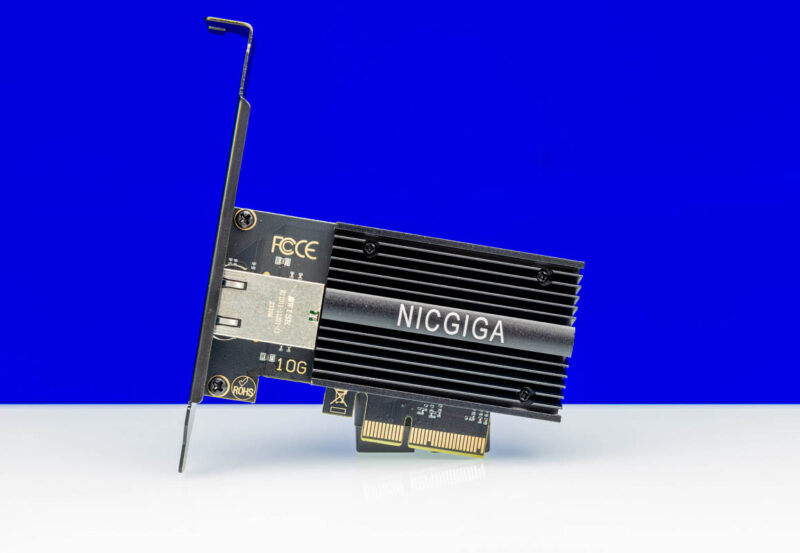
Underneath the heatsink, we can see the tiny Marvell AQC113C. The AQC tells us this is a 10GbE NIC from Marvell’s Aquantia acquisition. One may know the AQC113 line since it is used in systems like the 10GbE Apple Mac Mini M1 we looked at some time ago.
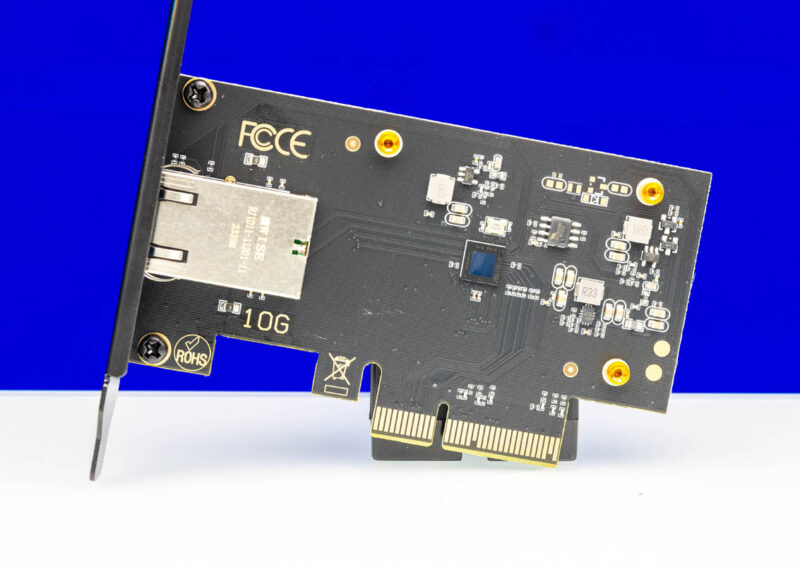
The back of the card does not have much.
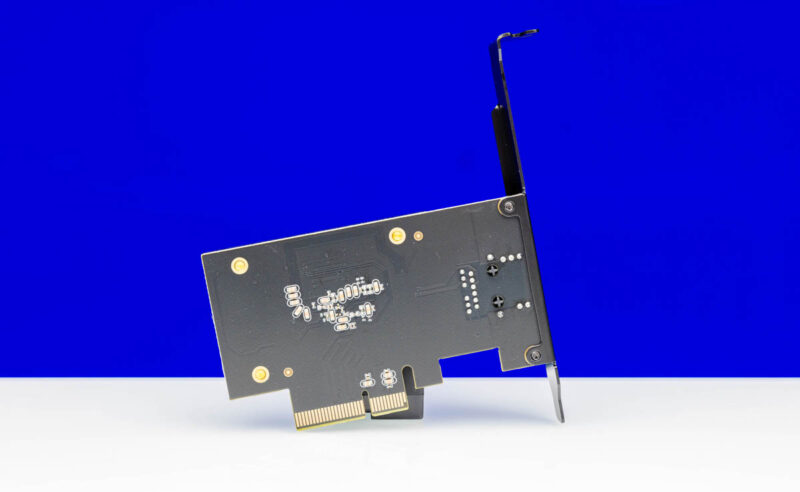
Here is the port.
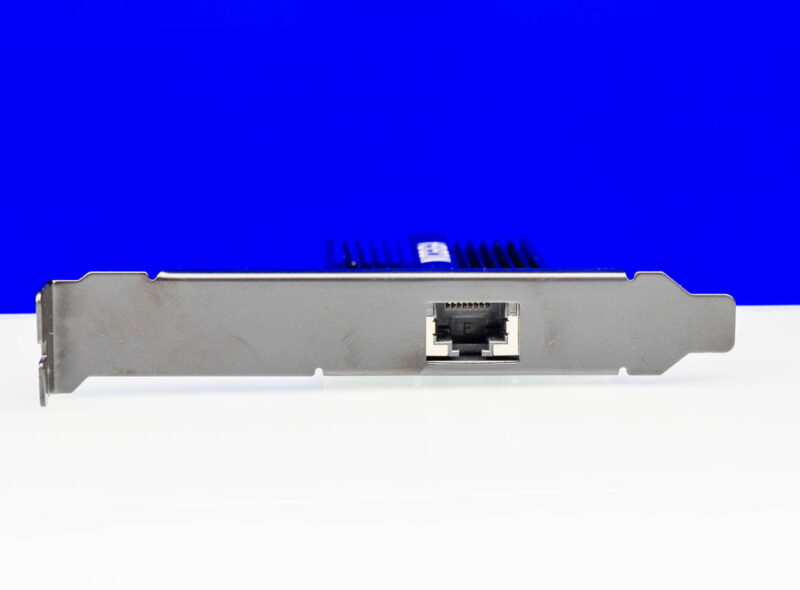
Here is the heatsink view with the heatsink on. The AQC113C we have seen use under 4W in most of our testing, so it is not generating a ton of heat.
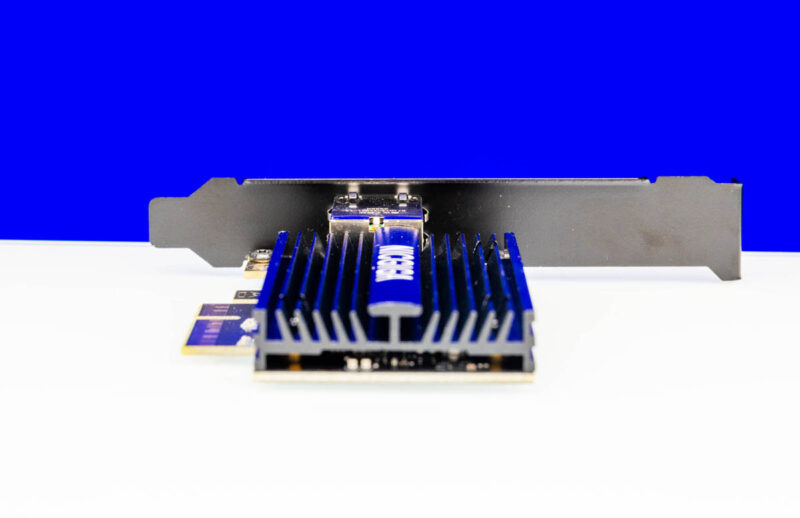
Next, let us get to the performance.
Cheap NICGIGA 10Gbase-T Adapter with Marvell AQC113C Performance
Overall, we got 10Gbase-T speeds as we would expect using iperf3:
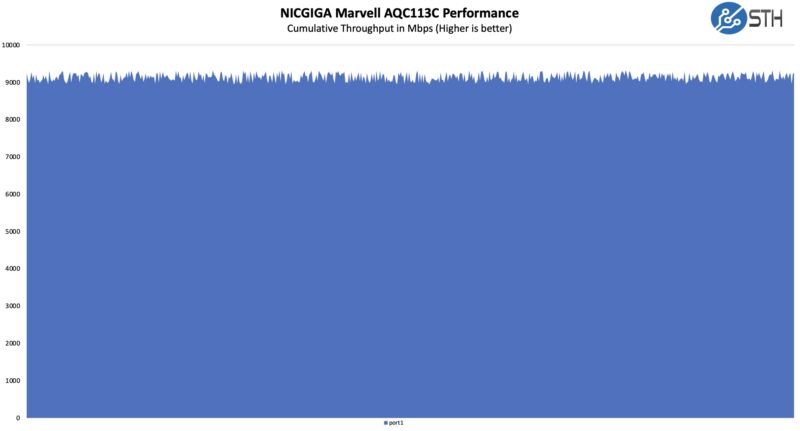
This is a fairly well-known consumer NIC that launched in the 2021 timeframe to update the AQC107.
Final Words
You may have seen this in our recent Minisforum MS-01 review. As a super low-power card, this is one where we could add it to the system with a minimal impact on thermals. If you want to see specific OS compatibility, it is easy enough to look up AQC113 which is what this card is using. We can see the standard Marvell drivers in the Windows Device Manager.
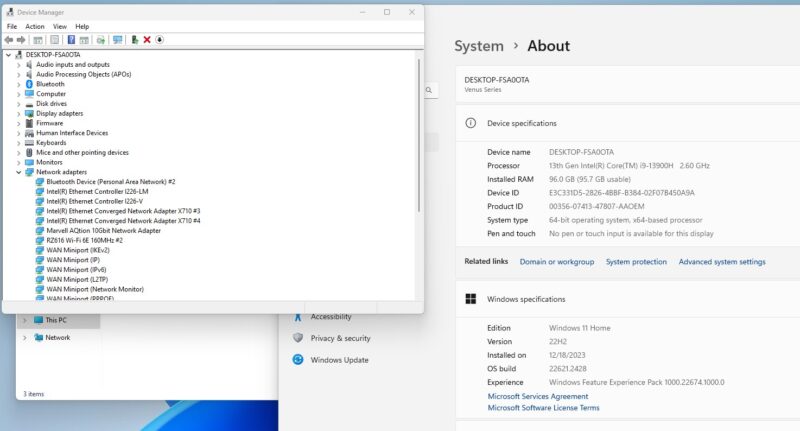
For $200 this would not be our choice in a card. For $65-75, this might be an easy way to add 10GbE for folks who want faster networking. It also uses a relatively low-power modern chip unlike some of the other cards that are out there using ancient 10Gbase-T chips that cannot support things like 2.5GbE speeds.
For our longtime readers, you may have noticed the background color. Our studio team was using this as a test for a new feature in the studio on the third set there. The brand name for this one is always strange, but we have seen their other products before such as in this NICGIGA 8x 2.5GbE 1x 10GbE switch.
We also have a quick 30-second short with a few more angles on the new STH Labs YouTube channel.
Where to Buy
We purchased our unit from Amazon. Here is an affiliate link.
Note we participate in a number of affiliate programs, so we may earn a small commission if you buy one through this link. That helps us purchase more cards to review.

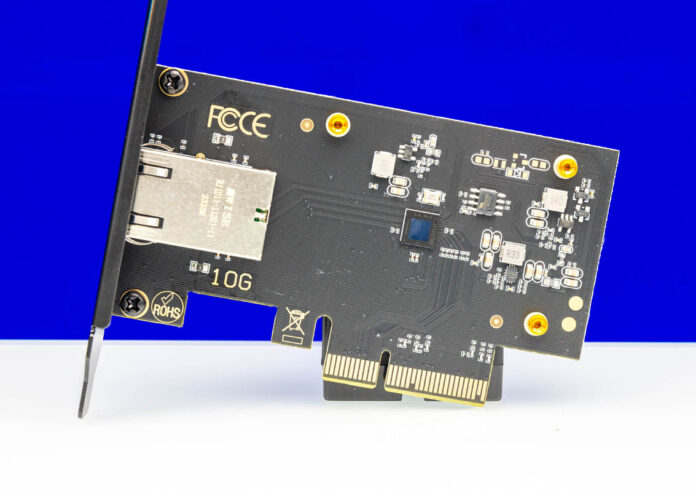



Interesting thing about this chip is that it is Gen 4 x1. Easy to integrate and there are lot more 1x slots on motherboards.
That’s a x4 slot, so it won’t fit in your x1 slot (unless it has an open back)
I think PCIe 4 x1 support is most useful in scenarios when it is integrated onto a motherboard. As it also supports PCIe 3 x2-4, it isn’t likely that anyone is going to make an add-on card with an x1 interface, since that would bottleneck the speed on PCIe 3 systems. But if you’re putting it on a motherboard and can ensure it’s wired up using PCIe 4, then you’re good to go and can save a few PCIe lanes for other stuff.
Good price. Bad name. Let’s see how reliable they are as people start buying them.
I have an issue with an AQC107 based card where the audio in RDP sessions is desynced. It only does it on this system with the AQC107 system on it. Hopefully this new chipset fixes that.
I’ve had one of these in my home server for about 18 months, zero issues.
I tested a few AQC113 and AQC107 cards trying to find on that would run at Gen 4 x1. The Gigabyte and Nicgiga would only link at Gen 3 in a Gen4 x1 slot, but the OWC PCIe x2 card did.
Yeah, I also first read the N word…
oh man that brand name might be misidentified without close scrutiny, at a quick glance, that’s certainly what happened to me, and i was doing a double take
Too bad there is no SFP+ model of this card. As it is one of the few cards to have ASPM support.
Terrible company name, at first glance looks like a terrible word…
We have another head-scratcher name coming.
Nicgiga, please.
How does feature set compare to say a used MCX3 or 4?
You could get an Nvidia Connect-X 4 card in this price range used on eBay and get a ton of offload capability. But maybe modern Marvel chips have similar performance now?
Also on Amazon they have a dual port Intel X540 T2 chipset nic for $5 less than the Marvell.
@Gavin+Greenwalt: X540 is over 10 years old now. It does not do 2.5 or 5GBit/s. It does not support EEE nor does it support other Intel energy efficiency technologies. It’s built on 40nm process and has a typical power use of 12.5W. Since it’s a PCIe 2.0 design it requires x8 connection for full speed in dual port configuration.
There’s a reason they are cheaper ;)
Looks like they rebadged the Seeker stuff. Or it’s actually them who knows
Those who say X540, the damn thing draws near 20W when you have both ports plugged in. They need a lot of airflow!
I was hoping this meant a modern, cheap 10G SFP+ card was available, but alas! If I bought one of these cards I’d have to spend the same again on a transceiver module. :-(
the affiliate link gives me a Page Not Found
10G Base T card is no longer showing on Amazon UK. When it was there it was way more expensive in GBP – roughly equivalent to 140USD!
DPDK is a decent place to look at capability, although actual support is minimal (unless you care to write your own software). https://doc.dpdk.org/guides/nics/overview.html
The Amazon link is broken today but worked yesterday.
It would be nice if this review could confirm whether the card can link at x1 PCIe4 speeds.
Also, out of curiosity, what does the Serve the Home test rig look like for determining power draw of an individual PCIe card?
Mine arrived today! I’m seeing it in my Amazon history, but the product is not found. STH-effect mustof cleared ’em out of inventory
Do you have any data on power consumption of the AQC113C compared to the AQC107?
NIC means Network Card, GIGA means Gigabit, so it is called NIC-GIGA.
The ASUS XG-100C V2 is also based on the AQC-113 nowadays if you want a better known brand. It used to be based on the ACQ-107/108 and this change hasn’t been documented, but can be identified via PCI ID. Their drivers are outdated, but you can use original Marvell drivers instead.